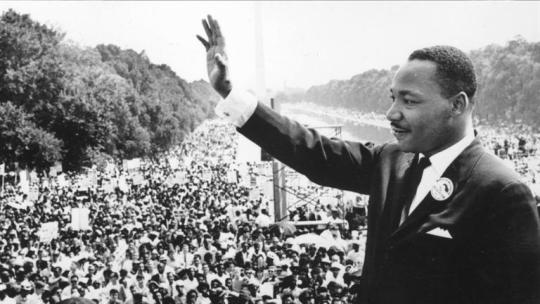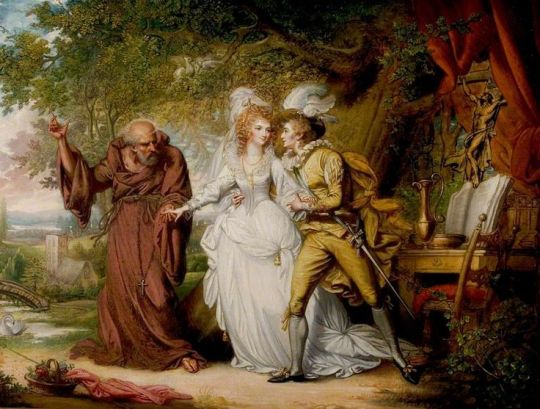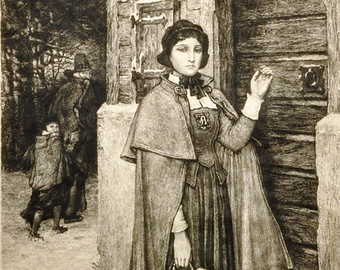Text
The Lover - In Conclusion
As evidenced by the wide variety of motivations, character roles, and situations that were presented, it is clear that the Lover archetype can morph to fit many different forms depending on the media.
0 notes
Text
The Lover - In Real Life

Image Source: Museum of the African Diaspora
If there was ever a real life figure that could fit the role of the humanitarian lover, it would be Dr. Martin Luther King, Jr. The leader of the non-militant wing of the Civil Rights Movement in the 1950s and 1960s, Dr. King called for civil disobedience and peaceful protests to the institutions that discriminated against African Americans and minorities. His seminal I Have a Dream laid forth a positive, uplifting vision of America where “[his] four little children will live in a nation where they be judged not by the color of their skin but by the content of their character.” Time and time again, he showed that he believed that the heart of the American public could overcome its prejudices; despite his work and the successes of the movement, it is debatable whether Mr. King’s dream has been realized.
Citation:
King, Martin Luther, Jr. "The I Have a Dream Speech - The U.S. Constitution Online." The I Have a Dream Speech - The U.S. Constitution Online - USConstitution.net. N.p., 3 Mar. 2010. Web. 04 May 2017.
0 notes
Text
The Lover - In Video Games
https://www.youtube.com/watch?v=VPKw2RYcA9U
Video Source: CoastersNGames, Youtube
WARNING: SPOILERS
Released to critical acclaim in 2015, Ori and the Blind Forest was praised for its deep story-telling and delightful art style. The antagonist is a large black owl named Kuro, and, upon first meeting her in-game, it would be easy to mistake her for a Destroyer. She is ruthless, and stops at nothing to try and snuff out the titular character. However, eventually the player learns that events portrayed earlier in the game killed three of her chicks; with one of them left unhatched, it becomes easy to see that Kuro--despite how devastating her actions may be for the rest of the forest--is acting out of concern for the safety of her unborn child.
Citation:
Ori and the Blind Forest. Computer software. Moon Studios and Microsoft, 11 Mar. 2015. Web.
0 notes
Text
The Lover - In Lyrical Writing

Image Source: Pintrest
Perhaps the most obvious examples of the lover archetype are the eponymous protagonists of Shakespeare’s Romeo and Juliet. It is romantic love that drives the two noble heirs to defy the wishes of their parents and become wed, and that ultimately leads to their respective suicides at the end of the play. Here, the lover archetype is seen in its most obvious phenotype: the tragic lover. Rather than living a fulfilling happily-ever-after, the lovers are forced into a tragic ending of death and unfulfilled romance.
Citation:
Holderness, Graham. William Shakespeare, Romeo and Juliet. London, England: Penguin, 1990. Print.
0 notes
Text
The Lover - In Prose

Image Source: Etsy
One of the most prominent examples of the lover archetype is in the book The Scarlet Letter, by Nathaniel Hawthorne. The book, set in Puritan Massachusetts, tells the story of Hester Prynne and how she copes with the consequences of her affair with her local minister, Arthur Dimmesdale. It is clear from the start of the book that there are two kinds of love motivating Hester throughout the book: her romantic interest with Arthur, and the love of her child, Pearl. The romantic love she feels for Arthur is what drives her to keep his name hidden from her husband, Roger Chillingworth, as well as from the rest of the townspeople. In contrast, it is the love for her child that, in part, causes her to re-think the harsh legalist thought of the Puritans, as well as to do whatever is possible to provide for Pearl’s wellbeing.
Citation(s):
Hawthorne, Nathaniel, and Chris Rice. The Scarlet Letter. Harlow, Essex, England: Pearson Education, 2008. Print.
0 notes
Text
The Lover - What is it?
The lover is a character whose main motivation in a story is love; while they are most often conceived as heroes, there are villains who are motivated by love as well. This love can romantic in nature, but it can also be a love of family, or just a general feeling of care for humanity and the people that surround them. The archetype first started to take prominence in Romantic-era literature, but examples can be found in Shakespeare and earlier works as well. In this series, we’ll be looking at the different versions of this archetype and how they appear in a few different media, as well as present a real life example at the end.
0 notes